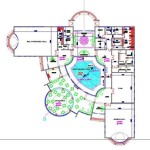House of Plantagenet Coat Arms: A Glimpse into Royal History
Introduction
The House of Plantagenet is one of the most renowned royal dynasties in English history, ruling England for over three centuries from 1154 to 1485. During their reign, the Plantagenets left a lasting legacy, not only in terms of political and social developments but also in heraldic symbols. The Plantagenet coat of arms, with its distinct features and rich symbolism, serves as a testament to their power and lineage.
Origins and Early Use
The Plantagenet coat of arms finds its roots in the 12th century, when Geoffrey Plantagenet, Count of Anjou, married Matilda, the daughter of King Henry I of England. Geoffrey's son, Henry II, ascended to the English throne in 1154, marking the beginning of the Plantagenet dynasty. It was during Henry II's reign that the coat of arms, featuring three gold lions passant on a red field, was first adopted.
Symbolism and Meaning
The three gold lions on the Plantagenet coat of arms hold deep symbolic significance. Lions have long been associated with strength, courage, and majesty, traits that the Plantagenet kings sought to embody. The color red, a bold and vibrant hue, represents passion, energy, and determination. The combination of these elements conveys the power and authority of the Plantagenet dynasty.
Variations and Adaptations
Over the centuries, the Plantagenet coat of arms underwent several variations and adaptations to reflect changing circumstances and alliances. During the reign of King Richard I, also known as Richard the Lionheart, the coat of arms was modified to include a red lion rampant on a yellow field. This variation, known as the "lionheart," symbolized Richard's bravery and military prowess.
Another notable adaptation occurred during the Wars of the Roses, a series of civil wars fought between the rival factions of the House of Lancaster and the House of York, both of which claimed descent from the Plantagenets. The Lancastrians displayed a red rose on their coat of arms, while the Yorkists used a white rose. The combination of the red and white roses eventually led to the creation of the Tudor rose, a symbol of unity and reconciliation.
Legacy and Influence
The Plantagenet coat of arms remains a significant symbol in English history and heraldry. It has been incorporated into various royal and national emblems, including the Royal Standard of the United Kingdom and the coats of arms of several English counties. The influence of the Plantagenet coat of arms extends beyond England, as it can be found in the heraldry of many noble families throughout Europe.
Conclusion
The House of Plantagenet coat of arms is a powerful visual representation of a dynasty that shaped the course of English history. Its enduring legacy speaks to the importance of heraldry in capturing the essence of royal power and lineage. The coat of arms serves as a reminder of the Plantagenet dynasty's contribution to English history and culture, forever etched in the annals of time.
House Of Plantagenet Wikipedia

European Heraldry House Of Plantagenet

European Heraldry House Of Plantagenet

List Of Coats Arms The House Plantagenet Coat

List Of Coats Arms The House Plantagenet Wikiwand Royal Family Trees

European Heraldry House Of York Plantagenet

File Arms Of George Plantagenet 1st De Clarence Svg Wikipedia

European Heraldry House Of Plantagenet

Plantagenet Coat Of Arms Medieval History

Royal House De Britain York Plantagenet Tudor Heraldry Stuart Crest King Hm








